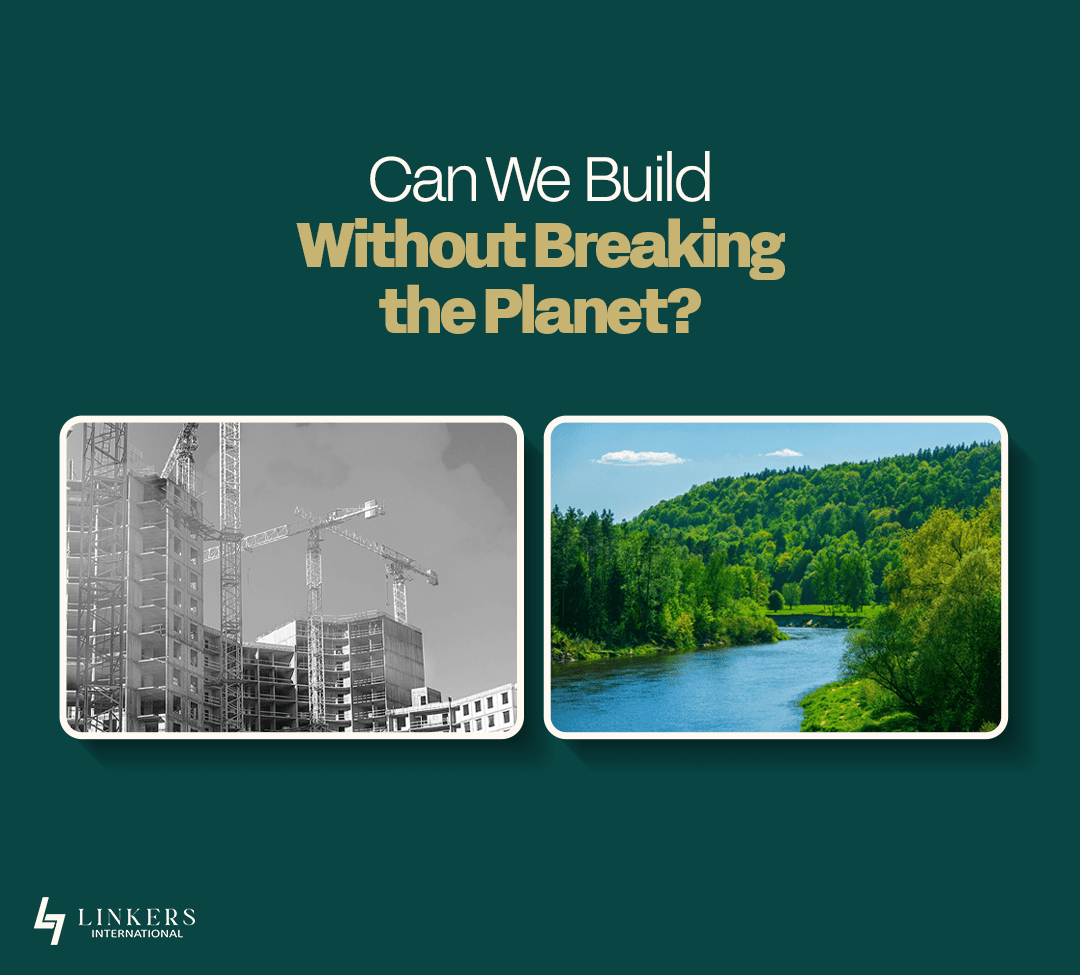Every state wants progress but at what cost?
Pakistan is surging ahead with an ambitious push toward urbanization and infrastructure expansion. Cities like Lahore, Karachi, and Islamabad are rapidly transforming, with concrete rising where trees once stood. From high-rise apartment complexes to sprawling housing societies and mega road networks, the construction boom signals a vision of progress that’s fast, bold, and unrelenting.Urban development in this time is marked by many significant developments including the China-Pakistan Economic Corridor (CPEC), the Ravi Riverfront Urban Development, numerous flyovers and underpasses all transforming skylines and improving travel times but also testing ecosystems too. Productive agricultural land is being devoured. Forests are being covered in concrete. Natural habitat and green belts that served as respiratory sustenance for our cities are gone.
The call for more development raises the important question; how do we build a better future without destroying ‘today’s’ planet’? Growth is not the problem; the means of delivery and speed of delivery is the issue? If the predominant mentality that there are no limits remains, the concrete jungle will provide little, if any, room for real jungle in the not too distant future. Pakistan is in an era where aspirations for economic growth must harness environmental realities. The issue is not merely one of construction – it is a question of responsible construction and recognition of the delicate balance we need to achieve between human context and environmental sustainability.
This blog will elaborate on these tensions: what we are building, what we are compromising, and how Pakistan can rethink progress through the lens of respecting a delicate equilibrium between human ambition and environmental responsibility. Join us as we reveal hidden costs and hopeful alternatives.
What Does Sustainable Development Really Mean?
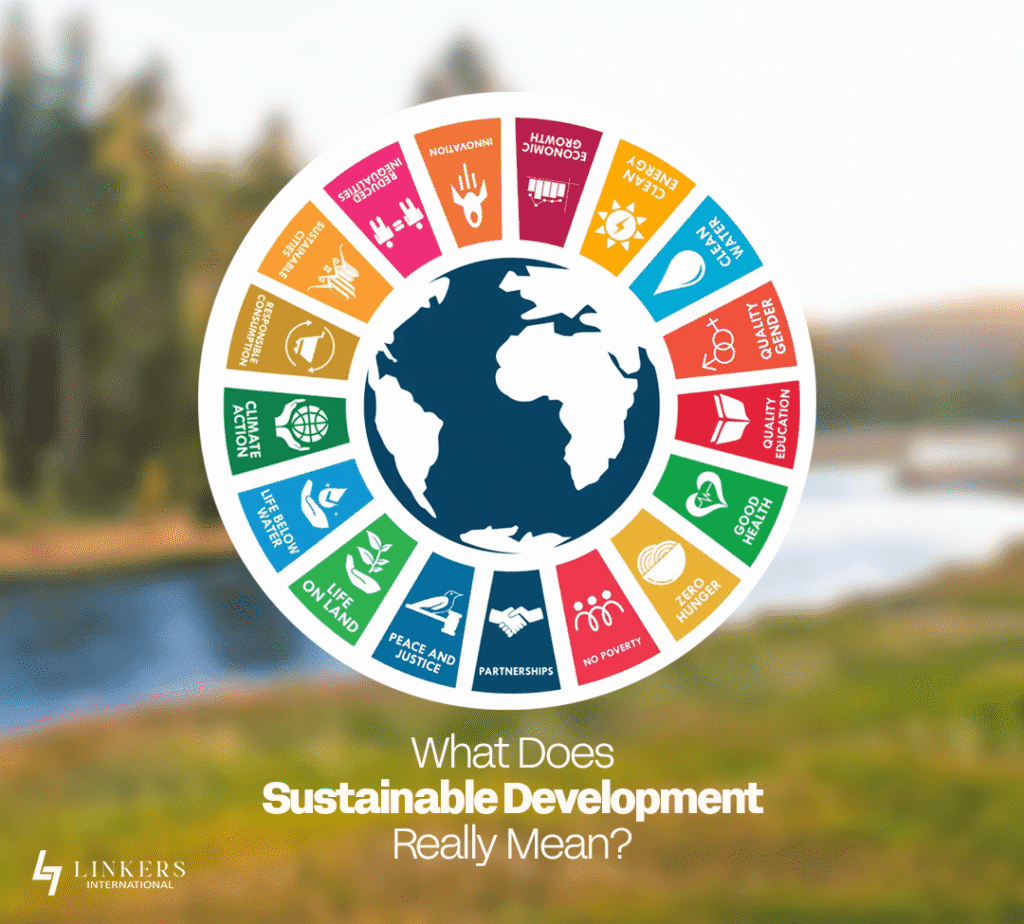
Sustainable development is basically growing without breaking-the building up of the economy in such a manner as to protect nature, retain the cultural identity, and uplift the communities. It is a development that does not leave behind a trail of destruction as it treats its path-it is the art of being able to set up an industry not at the cost of poisoning the rivers or with the indiscriminate chopping down of forests and to improve human lives without exhausting resources for future generations.The Sustainable Development Goals comprise 17 interconnected targets on issues ranging from clean energy and climate action to poverty reduction and education outlined by the United Nations. These are not just idealistic wishes; they are, in fact, a global template through which countries like Pakistan can diplomatically exploit development.
For Pakistan, the urgency couldn’t be clearer:
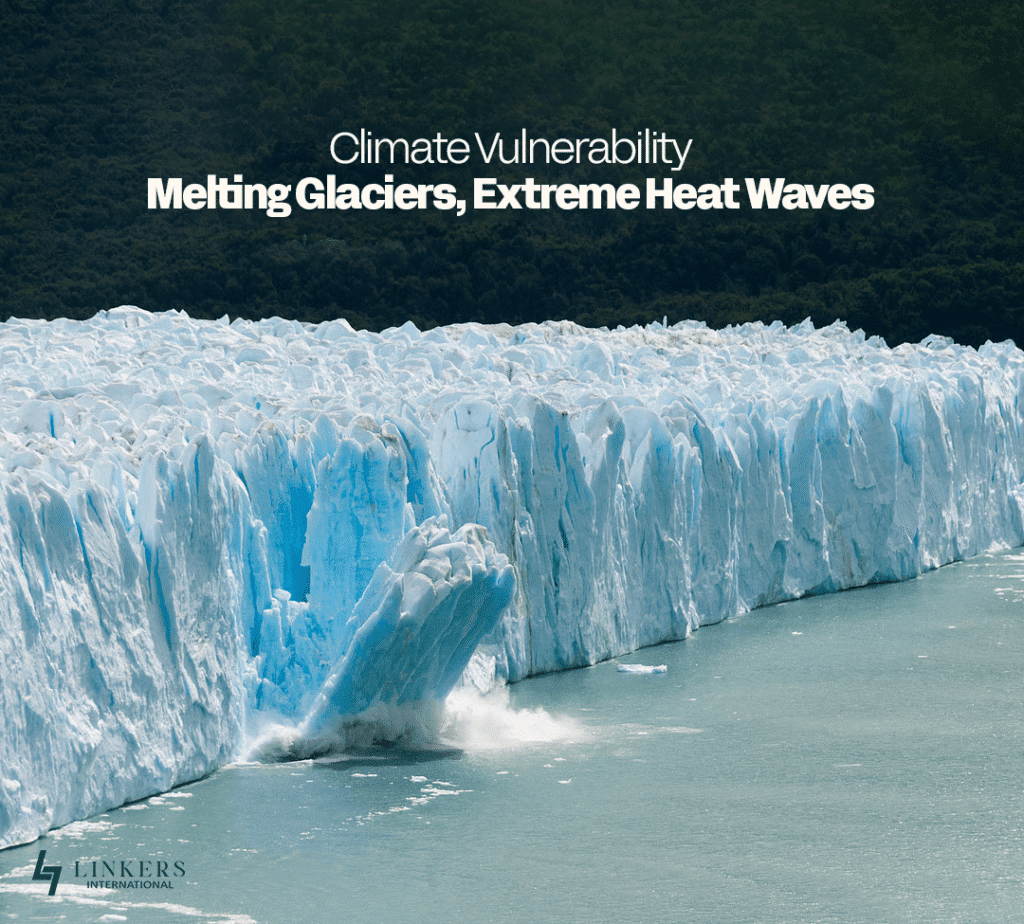
- Climate Vulnerability: The country ranks among the most climate-affected nations, facing melting glaciers, extreme heat waves, and unpredictable monsoons.
- Frequent Flooding: Devastating floods—like those in 2022—displaced millions and wrecked infrastructure, highlighting the cost of ignoring ecological fragility.
- Resource Pressure: Rapid population growth and urbanization are straining water supplies, agricultural land, and energy systems.
Sustainable development isn’t a luxury—it’s a lifeline. This blog will unpack what it takes for Pakistan to pursue a future that’s both ambitious and responsible, offering real-world examples and practical insights along the way.
Development Without Direction
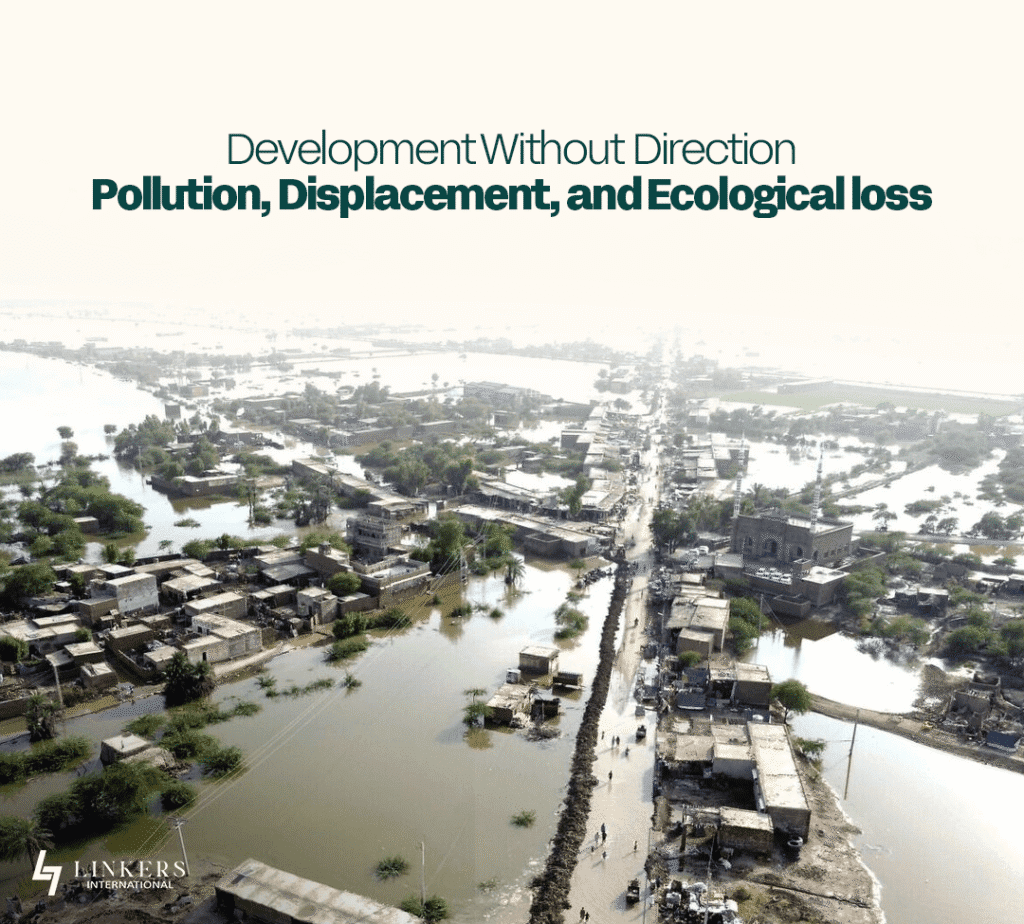
Pakistan’s development often follows a reactive model—projects are launched with urgency, but environmental and social consequences are considered only after damage is done. This “build first, regret later” approach has led to pollution, displacement, and ecological loss across the country.
1. Lahore’s Canal Road Expansion
For various years, the widening of Canal Road in Lahore in order to cater for increased congestion meant the slaughtering of many historic trees along the Canal, and was done without any sort of environmental impact assessment, or consideration of green infrastructure, and proceeded despite community opposition, and long court battles, and illness. The reduction of greening has been a contributor to urban heat, loss of biodiversity, and reduced character and ecosystem services in the area.
2. Gwadar’s Unplanned Growth
Gwadar, that was forecasted to be the prototype of a futuristic port city under CPEC, has seen the tremendous velocity at which roads, housing schemes, and commercial spaces have materialised, very much exceeding basic infrastructure: “People were suffering due to water scarcity, lacking sanitary facilities, and an absence of healthcare facilities”. Since the urban master plan was never completed, urban growth seemed approximate and random, hence the pressure of urbanisation on the fragile coastal ecosystem and local populations is huge.
3. CPEC Zones Without Proper EIAs
The development of a number of Special Economic Zones (SEZs) being established under CPEC is proceeding without adherence to rigorous Environmental Impact Assessments. Projects such as the Dhabeji SEZ and several others in Balochistan and KP have faced complaints about deforestation, water stress, and displacement. This pattern of development has the potential to make these zones liabilities rather than sustainable development engines if there are no environmental safeguards in place.
Can We Build Smarter?
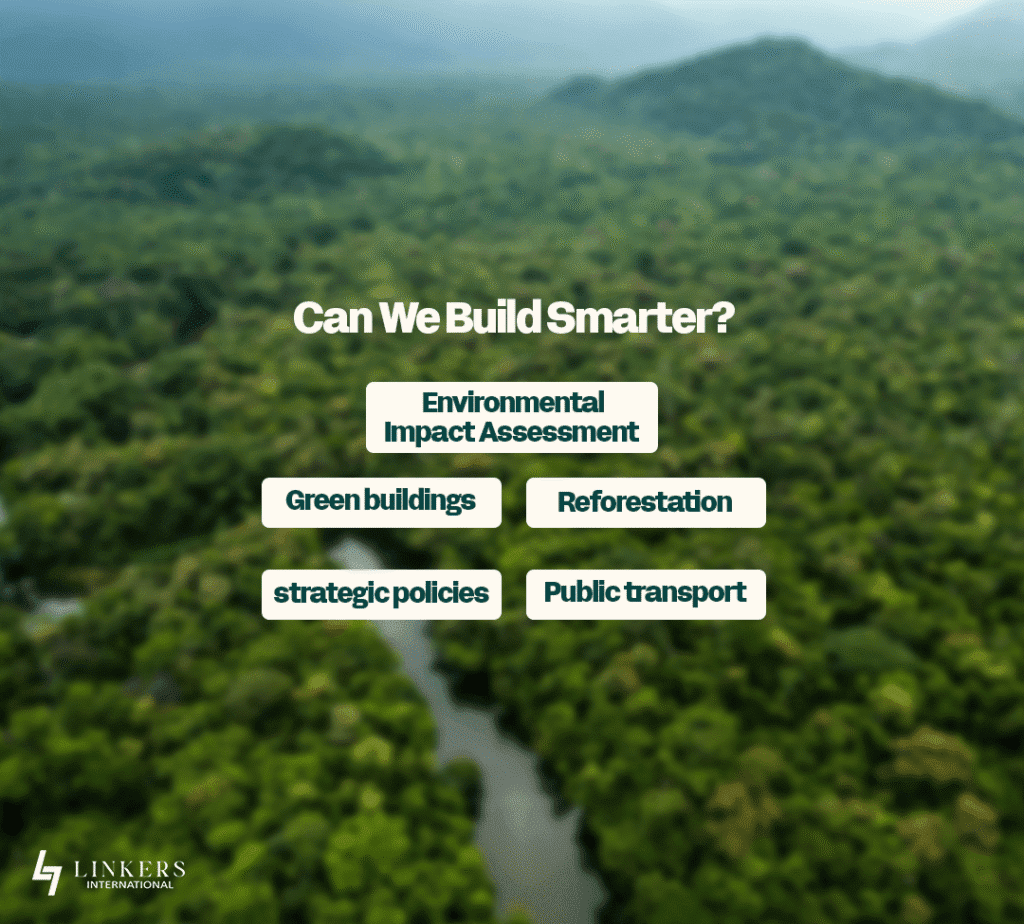
Pakistan doesn’t need to hold back its development, it just needs to develop smarter. These are five top ways we can develop without destroying the environment. Firstly, all development projects — large and small combat zones, highways, housing schemes — should be required to conduct an Environmental Impact Assessment (‘EIA’) before they begin development. An EIA is a process for evaluating the potential impact of a development project on the environment, the water, the air, and the communities in proximity.
- Pakistan made EIAs compulsory through the Environmental Protection Act of 1997.
- An EIA MUST be submitted before a development project is launched or even before the contractual documents are signed by the developers.
- Developers who fail to submit a complete set of EIAs may face delays, fines, or even termination for their projects.
- EIAs are vital in preventing disasters like flood, pollution, and displacement.
Green Architecture & Smarter City Planning
- We can think of vertical expansion, as opposed to horizontal expansion for endless circuits of cities.
- Vertical expansion can allow us to add apartment towers, rather than consume land.
- Solar panels being powered on rooftops already cut electricity consumption.
- Think of urban parks and greening belts that can absorb heat, and pollutants.
- Pakistan Green Building Code and Energy Conservation Building Code (ECBC-2023) are already advocating these changes.
Public Transport Over Road Expansion
Building more roads often leads to more traffic and pollution. Instead, we should invest in clean, reliable public transport.
- Cities like Peshawar and Lahore have expanded their Bus Rapid Transit (BRT) systems, cutting emissions and saving commuters money.
- Public transport reduces fuel use, traffic jams, and air pollution.
- It’s also more inclusive—helping students, workers, and low-income families.
Reforestation Alongside Construction
Whenever we construct, we should also create trees.
- Pakistan’s Ten Billion Tree Tsunami Programme has planted over 2 billion trees to date.
- Reforestation can mitigate climate change, reduce flooding, and cool our cities.
- Building developers can be mandated to plant trees around and adjacent to every new public building, road, and industrial area.
Policies That Penalize Environmental Violators
The issue of enforcing compliance is raised. Laws need to provide for adequate deterrents and punishment of serious clauses. Thus far, this has meant imposing penalties, de-licensing, and imprisonment, as is authorized under the Pakistan Environmental Protection Act. The existing penalties for example for illegal dumping and for illegal logging can fall into the category of illegal waste of hazardous waste and exceed Rs. 1 million.
The provinces might also establish environmental tribunals for hearings for serious allegations. There has been much discussion about the efficacy of anyone to enact legislation as a tool of successful enforcement; in particular, two important conditions for successful enforcement are promoting public awareness, and the role of a monitoring agency.
What Stops Us?
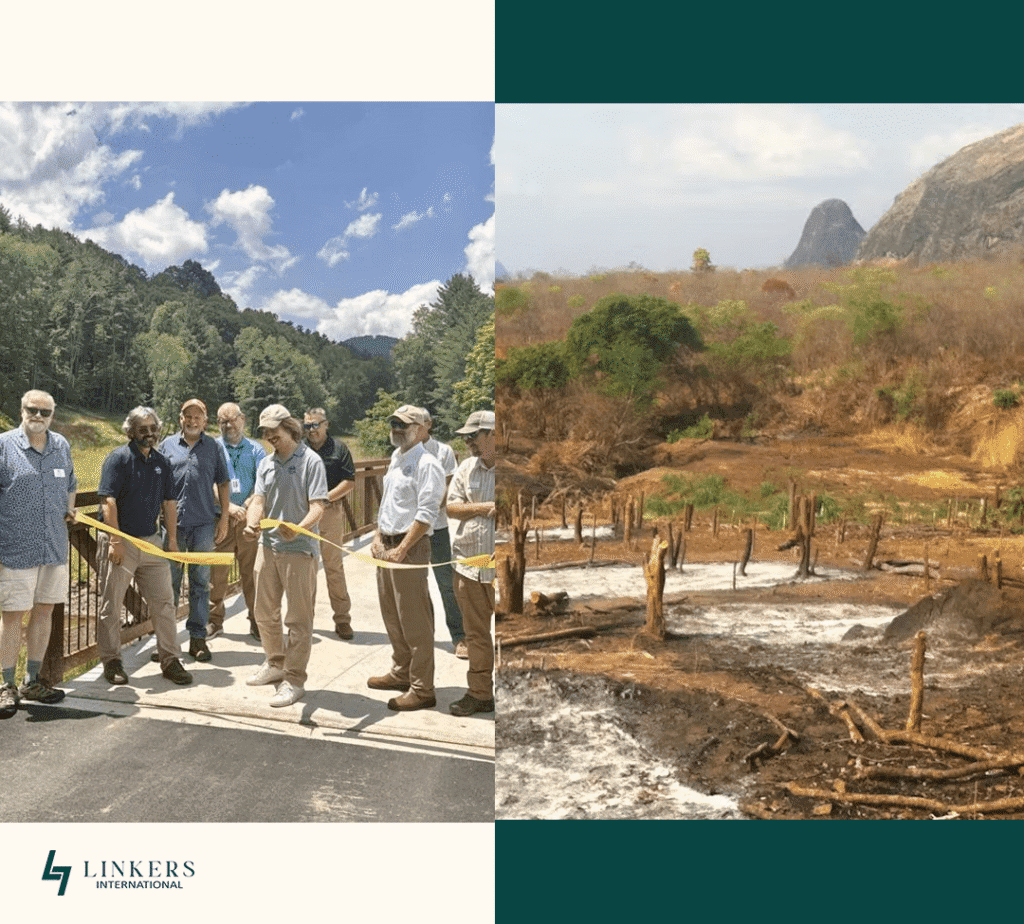
Despite the urgent need for sustainable development, Pakistan’s progress is often held back by a mix of short-sighted planning, weak governance, and a public narrative that equates development with concrete structures alone.
Lack of Long-Term Thinking
Many development projects are designed with immediate political or economic gains in mind flyovers before flood defenses, housing schemes before water systems. There’s little emphasis on future-proofing cities against climate change, population growth, or resource depletion. Planning cycles are often tied to election terms, not generational impact. As a result, we build fast but not wisely.
Corruption and Weak Enforcement
Pakistan has a number of laws on Environmental Impact Assessments (EIAs), land use controls, and prohibitions on illegal construction, but implementation is erratic and weak, rife with corruption from land approvals down to selecting contractors. Those with monitoring responsibilities are under-resourced, politically compromised or almost disregarded. A well-crafted policy, in the absence of accountability, will have little power.
Development = Concrete” Mindset
For many, progress still means more roads, more buildings, more visible infrastructure. Green spaces, cultural preservation, and social equity rarely make it into the picture. This mindset fuels urban sprawl, deforestation, and the erasure of heritage. We celebrate ribbon-cuttings for mega projects but overlook the long-term costs they impose on ecosystems and communities.
Little Public Awareness or Media Pressure
Sustainability rarely captures headlines. Environmental journalism is grossly underfunded, and public discourse on climate, conservation, or inclusive planning is often superficial. The media might shape public opinion and even hold its leadership accountable for any lapses, but it usually depicts political drama or short-term crises. Poor planning is poorly monitored, and harmful projects can proceed without resistance from the public without a well-informed populace and sustained media scrutiny.
Real Progress Means Balance
For a long time, we have designed progress based on numbers, GDP growth, sleek malls, and factory output. Yet how much about building not just economic growth, but clean air, drinkable water, and resilient communities. It is about making a society that provides people with the means to thrive, not just survive. These questions are not simple for Pakistan: Are our cities liveable? Are our rivers clean? Are our communities empowered? When our settlements develop polluted skies, displaced families, and weakened ecologies, we need to ask ourselves what it means to be successful.
This requires us to consider the question of what “modernization” actually entails. For example, while a city with malls and highways may consider itself progressive, what does this mean for people, culture, or social inequity? Understood this way, real progress is about finding a balance between ambition and respect for nature, culture, and people; and that is starting to emerge globally. Some focus on the happiness of citizens rather than just the economic output. Others build cities with gardens on rooftops, bike lanes instead of highway systems, or farms blossoming in the desert.These aren’t fantasies, they’re proof that bold development can still be thoughtful and green.Pakistan has the creativity, the resilience, and the spirit to carve its own version of balanced progress. This blog dives into how that future could look and what it will take to get there.
Conclusion
Last but not least “ Can we build without breaking or not?
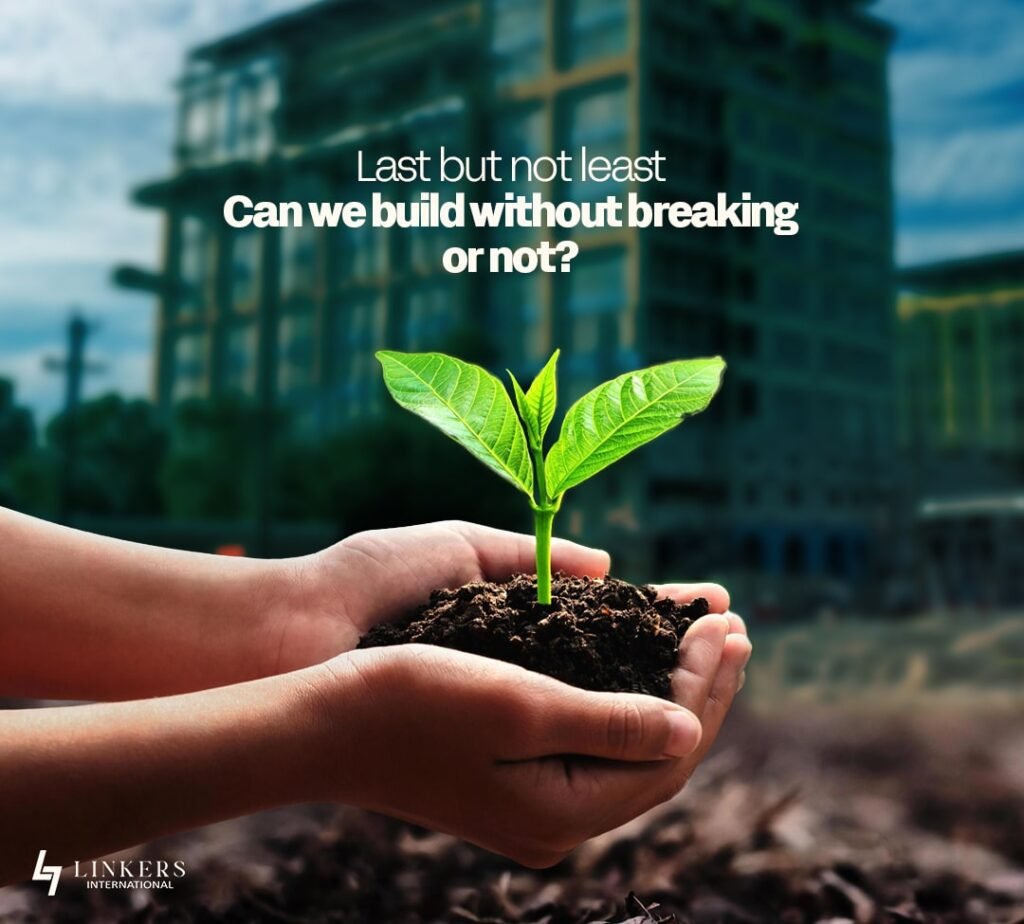
Yes we can. But only if we’re willing to think differently.The path to responsible development isn’t paved with shortcuts. It demands long-term vision, tough choices, and a willingness to value people and nature alongside profits and progress. Pakistan doesn’t need to halt its growth—it needs to guide it with wisdom.Let’s replace speed with strategy, concrete with conscience, and short-term fixes with lasting solutions. The question isn’t whether we can do it—it’s whether we’re ready to prioritize a future that’s inclusive, sustainable, and grounded in dignity for all.
Because in the end, progress isn’t about what we build, it’s about what we leave behind.


